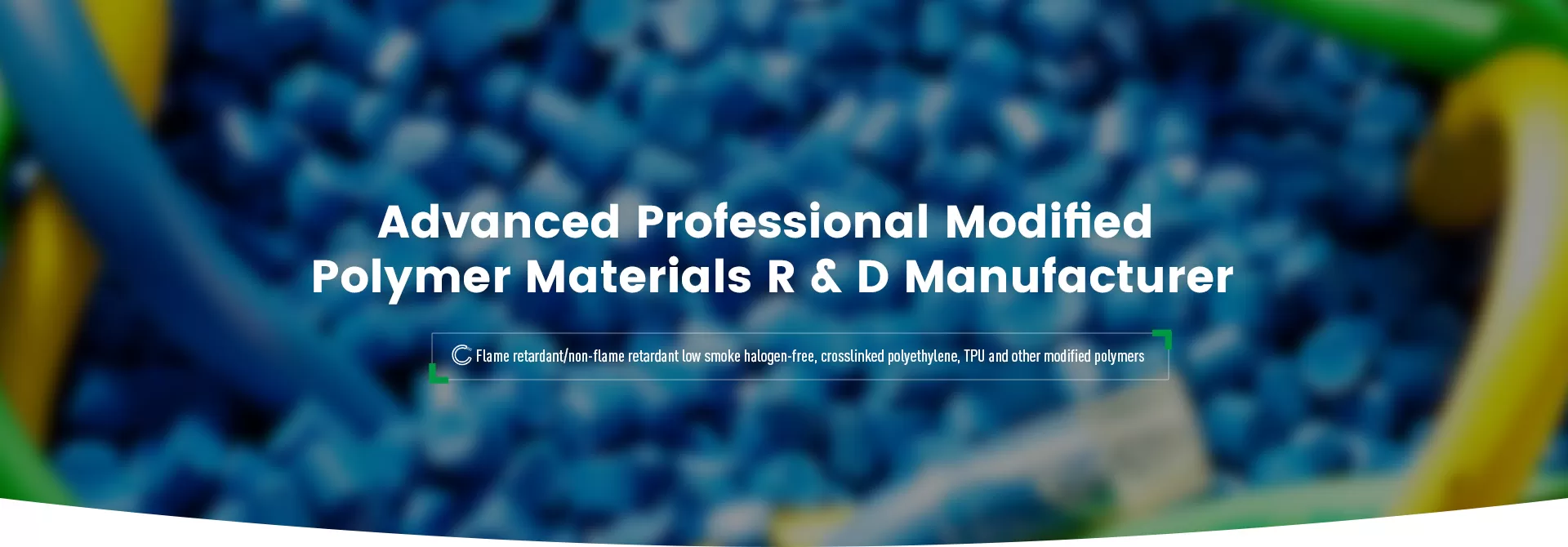
With the transformation of the global energy structure and the continued growth in demand for safe, environmentally friendly, and high-performance cables, XLPE compounds for wires and cables have become a popular material in the industry. From power transmission to new energy vehicles, from photovoltaic power generation to urban subways, the application scope of XLPE continues to expand, and it is driving the wire and cable industry to a higher level of reliability and technical standards.
XLPE, the full name of Cross-linked Polyethylene, is a type of cross-linked polyolefin. It is a thermosetting polymer material that forms a "cross-linked" structure between polyethylene molecules by physical or chemical means. Once this structure is formed, it will not melt even at high temperatures, giving the material excellent thermal stability and electrical insulation properties.
The composition of XLPE compound generally includes:
·Base resin (mainly PE)
·Peroxide or silane crosslinker
·Antioxidant and heat stabilizer
·Flame retardant (optional)
·Processing aids and fillers
These components are precisely proportioned and mixed to form a composite material that meets the requirements of specific cable standards. High-quality XLPE compound must simultaneously meet performance indicators such as high insulation, good flexibility, low dielectric loss, heat resistance, and chemical corrosion resistance.
The cross-linking types of cross-linked polyethylene generally include chemical cross-linking, irradiation cross-linking, UV cross-linking, and silane cross-linking. Each cross-linking method is different, and the cross-linked materials are also used in different fields.

The volume resistivity of XLPE can usually reach more than 10^15Ω·cm, and its dielectric strength is much higher than traditional materials such as PVC. It is suitable for transmission cables with high voltage levels of 6kV to 500kV, which can effectively prevent electrical breakdown and leakage, and ensure the long-term stable operation of the power system.
XLPE can work for a long time at 90℃, and has a short-term temperature resistance of up to 250℃. It is widely used in industrial and power engineering with complex thermal environments and large cable loads. Compared with thermoplastic materials such as PVC and PE, XLPE performs better in thermal aging tests.
The cross-linked structure makes the material less likely to deform, and has higher tensile strength and tear resistance. The characteristics of wear resistance, chemical corrosion resistance, and UV resistance also make it suitable for outdoor laying, underground laying, and marine environment use.
Many high-end XLPE formulas have achieved halogen-free, low smoke, and low toxicity, meeting the requirements of environmental regulations such as RoHS, REACH, IEC 62821, and UL 1581, and are particularly suitable for public safety fields such as data centers, hospitals, and subways.
The application of XLPE compounds in the cable field is mainly to produce cable sheath layers and insulation layers. The temperature resistance can range from 105℃-150℃, which is suitable for cables in most environments.
Widely used in single-core and multi-core power transmission cables of 10kV~500kV, mainly used in urban power grids, substations, and power transmission and distribution systems.
Advantages: High voltage level tolerance and long-term reliability.
Need to deal with complex outdoor working conditions such as ultraviolet radiation, humidity, heat, salt spray, etc. XLPE can provide excellent environmental adaptability.
Advantages: strong weather resistance, long insulation life, in line with EN 50618, TÜV standards.
New energy vehicles have high demand for lightweight, high-temperature resistant, and oil-resistant cable materials, and XLPE is one of the core selection materials.
Advantages: can work for a long time at 125~150℃, supporting the stability of EV high-voltage system.
Need to meet the comprehensive properties of flame retardancy, oil resistance, wear resistance, high temperature resistance, etc., and use special flame-retardant XLPE compounds.
Advantages: Improve the safety level of the cable system and meet the requirements of IEC 60332, EN 45545, etc.
When purchasing XLPE compounds for wires and cables, cable companies should evaluate suppliers and material quality from the following perspectives:
Performance matching: Does it meet the expected voltage level, operating temperature and insulation performance requirements?
Processing adaptability: Is the compound compatible with existing extrusion lines, cross-linking equipment and process temperature?
Compliance: Has it passed RoHS, REACH, UL, CE and other certifications? Is there a third-party test report?
Batch stability: Does the supplier have the ability to provide long-term, stable and consistent supply?
Technical support capabilities: Can it provide customized formulas, process recommendations and after-sales technical docking?
Angreen produces and sells XLPE compound for wires and cable, which can be used to produce photovoltaic cables, power cables, wind power generation cables, automotive high-voltage wiring harnesses, etc. It complies with IEC/EN standards and has passed RoHS, REACH, UL, CE, TUV and other certifications.